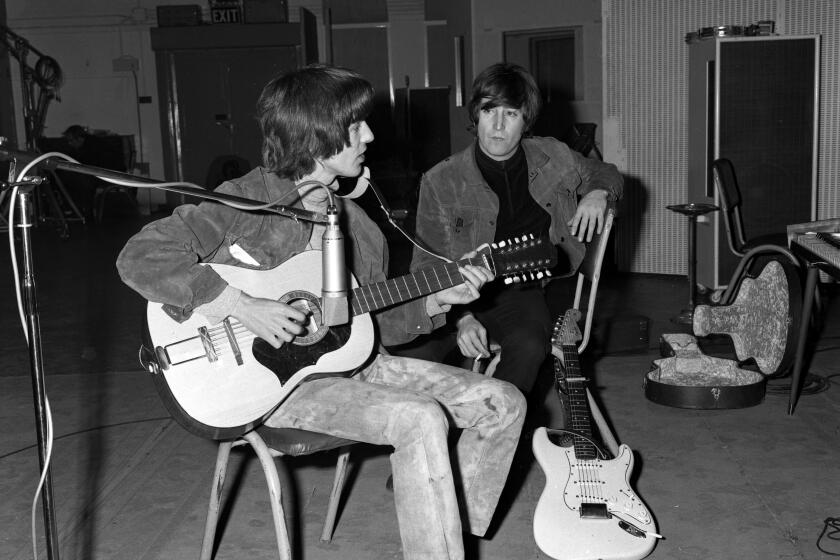An abandoned cause
Everybody figured it would come to this. After years of losing life a bit at a time, King-Drew Medical Center is all but gone (its final name, King-Harbor, was a capitulation, a bold-sounding hybrid that suggested change but signified defeat). Many groups share the blame for its oblivion, a fact that’s been repeated so many times now, it almost sounds like a cop-out. So let’s review.
As operator of the hospital, Los Angeles County has the lion’s share of accountability. In the end, for all of the Board of Supervisors’ complaints about racial and political obstructionism and an intractable “culture of failure,” it treated King-Drew like a 1960s boutique poverty program best left to the black folks rather than as an essential, full-service health establishment geared to the needs of the county’s most vulnerable population, which grew to be predominantly Latino. King-Drew, with its special mission of empowering the community after the 1965 Watts riots, needed the county’s special attention from the beginning; it got exactly the opposite. Talk about a culture of failure.
Then there’s the black political leadership that could never muster enough initiative to ensure that the county and the hospital’s chief funding source, the federal government, did the right thing. Supervisor Yvonne Burke will take that legacy of laissez-faire into retirement. Assemblyman Mervyn Dymally and Rep. Maxine Waters raised their voices early against closure, but those voices petered out as time went on and a sense of inevitability set in. They were also saddled with the perception that they were part of the problem at King-Drew -- protecting jobs and their own roles at what was as much a political machine as a medical institution.
But another big culprit in the King-Drew demise, one nobody ever fingers, is the black middle class. Too amorphous? Not at all. By the time the hospital opened in 1972, the black activism that created it was downshifting, and the black middle class was busily consolidating its gains on its way to becoming a phenomenon of the ‘80s and ‘90s.
The interests of that middle class began converging with the interests of the mainstream. This led to a schism that still holds: Middle-class blacks publicly express support for the causes of the poor, but privately they were doing all they could to avoid ever again having to go to a place such as King-Drew. They had permanently moved up and out of neighborhoods like Watts/Willowbrook and South-Central. Later, when the hospital needed their advocacy, middle-class blacks continued to distance themselves from King-Drew not so much because of its incompetence but because it epitomized black poverty, a condition they wanted to leave behind once and for all.
Of course, many in the middle class, especially those in healthcare and social services, care deeply about King-Drew and its loss. But most do not. They may have empathy, and they may even see King-Drew as part of a historical black struggle for justice in Los Angeles. But they do not see its preservation as fundamentally in their interest. That reflects the ongoing “identity crisis” of black interests -- is the condition of the black poor and working class the bellwether for us all? -- that is so problematic and so painfully represented in the whole King-Drew saga.
There was a moment of class solidarity in 2004, when King-Drew’s trauma center was on the chopping block. Many blacks united and rallied in the streets because the trauma center, unlike some departments that had folded, was working. It saved people from bullet wounds, knife stabs, blunt-force injuries. Despite its grisly function, the center was something all blacks could claim with no reservations. It boasted expertise and commitment; it was effective. And the county decided to sacrifice it on the altar of budget cuts that would theoretically save the hospital by reining in costs. Black supporters didn’t believe it; what they did believe, across the board, was that saving the trauma center was in their interest.
It was. But the trauma center closed anyway. And then the moment broke, faith vanished and everybody retreated to their respective corners to watch the King-Drew drama play out.
When Burke turned up last month with residency problems -- nominally living in her district townhouse in Mar Vista, as the law requires, while almost certainly spending most nights in Brentwood -- it reinforced what we already knew about the black middle class. Burke protested -- nobody black and middle class wants to be seen that way -- but the die had been cast.
And now? The county is pledging to rebuild King-Drew in a year -- hard to believe -- but its former clients will have to go somewhere else for medical help in the meantime. The black middle class supports the renaissance, of course, but what will its members do to make it happen? And how hard are they hoping that those clients don’t end up in their backyard?
More to Read
Start your day right
Sign up for Essential California for news, features and recommendations from the L.A. Times and beyond in your inbox six days a week.
You may occasionally receive promotional content from the Los Angeles Times.






